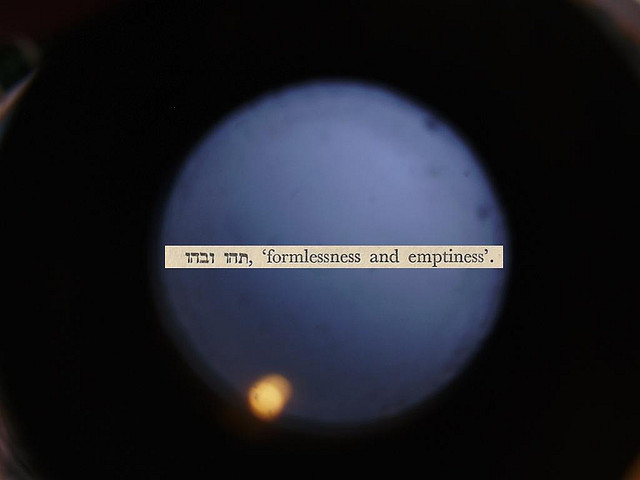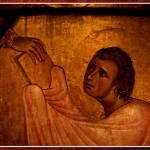We run our website the way we wished the whole internet worked: we provide high quality original content with no ads. We are funded solely by your direct support. Please consider supporting this project.

Pre-Modern Readings of Genesis 1
Biologos posted a three part reflection on Pre-Modern readings of Genesis 1 that are worth a closer look. And no matter what your particular way of reading this portion of Scripture, let’s pay attention to what edifies the Church and whether our reading contributes to that.
From Part I of the series:
Key theologians of the early church (such as Origen and Augustine, as we’ve discussed) read Scripture with multiple senses and meanings—with a literal sense and multiple spiritual senses. However, not all fully agreed with this methodology. Though most all would certainly hold to multiple senses of Scripture, some readers insisted upon a more profound attention to the literal sense, and the use of the literal sense to help restrain or hold in check the possible spiritual readings. Such 3rd- and 4th-century Church fathers, as St. Basil the Great, John Chrysostom, St. Ambrose, and Theodore of Mopsuestia insisted upon a much more restrained literal reading of Genesis 1.6
Yet even those who insist upon a more literal—or more historical—interpretation of Genesis 1 still contended that the primary purpose of any reading was to edify the Church, which entails setting forth the key theological teachings of Genesis 1, rather than focus on the material specifics. Again, such teachings include that the world is created, that God create the world out of nothing, and that the creation account demonstrates the great order and harmony of creation as a testimony of the God’s glory, beauty, and goodness.7
Related Reading

Part 3: Disarming Flood’s Inadequate Conception of Biblical Authority
Image by Ex-InTransit via Flickr In this third part of my review of Derek Flood’s Disarming Scripture I will offer a critique of his redefined conception of biblical inspiration and authority. I will begin by having us recall from Part I that Flood holds up “faithful questioning” over “unquestioning obedience” as the kind of faith that Jesus…

If the violent depictions of God in the Bible are not completely accurate, isn’t all of Scripture up for debate?
Question: I’m very intrigued by your cruciform hermeneutics and can’t wait for your book (Crucifixion of the Warrior God) to come out. But I have to say that it strikes me as dangerous. You’re basically saying that the violent portraits of God in the OT are not completely accurate. But doesn’t this place us flawed…

Love and Quasars: The Paul Wallace Interview (podcast)
Dan Kent talks with Paul Wallace about his new book: “Love and Quasars: An Astrophysicist Reconciles Faith and Science.” Episode 593 http://traffic.libsyn.com/askgregboyd/Episode_0593.mp3

Did God use Satan to test Job?
Question: In Job 1:21 and 2:10, Job seems to accept “adversity” from God while continuing to trust him. Job blames his troubles on God (i.e. “He shattered me” [16:12], “He breaks me down on every side” [19:10], “For he performs what is appointed for me” [23:14]). In Chapters 1 and 2, God even seems to…

Jesus, the Center of Scripture
Paul declared that Jesus was nothing less than the very embodiment of all of God. This distinction of “all of God” is important for us to understand what it means for us to see Jesus and God rightly. Battling proto-gnostic teachers who were apparently presenting Christ alongside other manifestations of God, Paul declares “in Christ…

How do you respond to Bart Ehrman’s book, “Misquoting Jesus”?
Question: I just read Bart Ehrman’s book Misquoting Jesus and it’s sort of rocked my world. How can we believe the Bible is God’s inerrant Word when we don’t even know what the original Bible said? Answer: I actually went to graduate school with Bart Ehrman (at Princeton). We used to smoke pipes together up…
